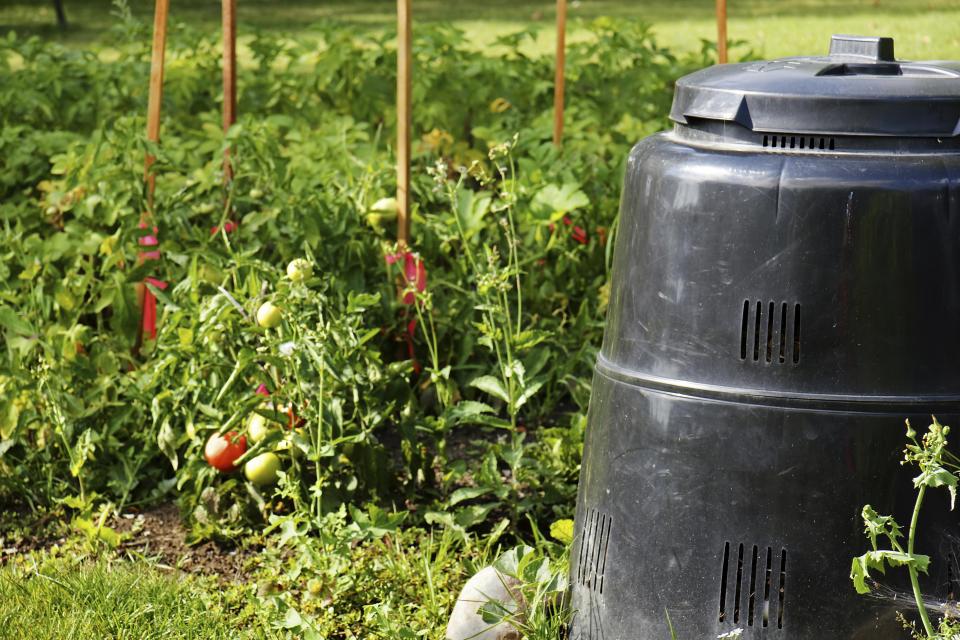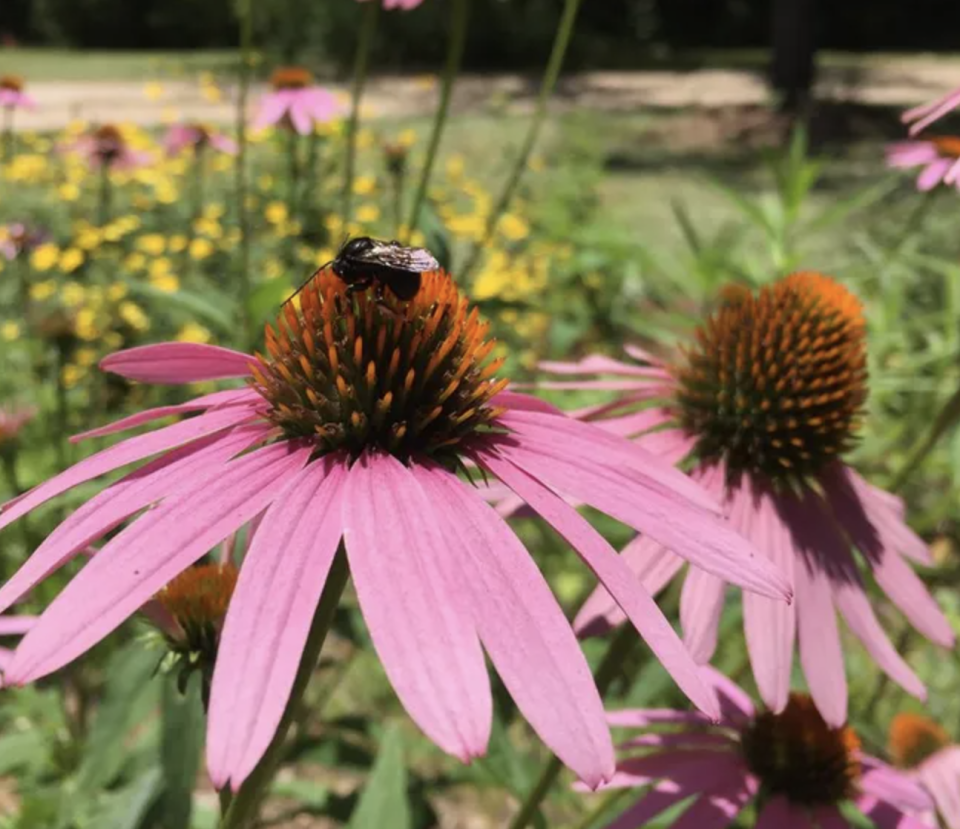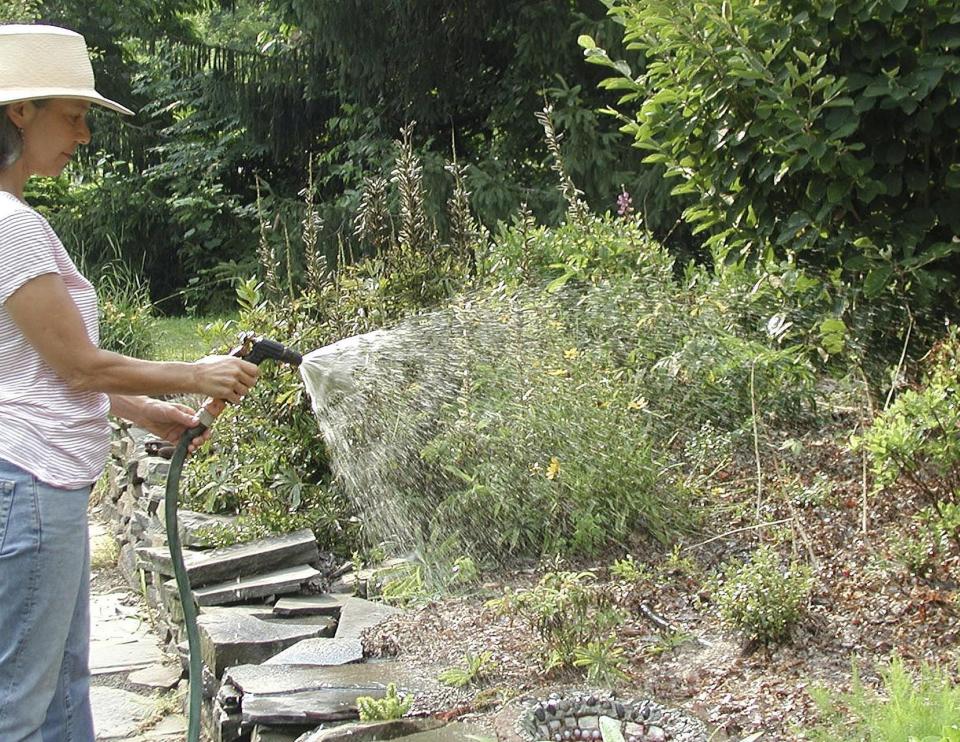Try these environmentally friendly practices in your garden or backyard
On April 22, many people across the world will be working toward a healthier environment through their Earth Day celebrations. Although some Earth Day campaigns are as broad as cleaning up our oceans, many environmental practices can start small — right in your own backyard. To keep our world clean and healthy, consider trying one or all of these small steps in your own garden.

Composting improves soil fertility while recycling
Composting is beneficial to our environment in many ways. Composting improves soil fertility, reducing the need for synthetic fertilizer. Synthetic fertilizers are frequently over-used and often run off into our rivers, streams and oceans. Fertilizers in waterways results in an overgrowth of aquatic vegetation that depletes the oxygen supply and can kill aquatic species as a result.
Composting is also a form of recycling. Kitchen scraps and gardening materials are often bagged in plastic and sent to the landfill. Composting these items instead reduces the overall amount of trash in landfills.
More: Want to create a compost pile? Here are 5 major components to produce nutrient-rich compost.
Leave the leaves — they return nutrients to the soil
Many insects, including some of our favorite beneficial ones, need debris, like leaves, to overwinter. On your lawn, mulching dried leaves on top of your grass can help put nutrients back into the soil and conserve water.
Leaving grass clippings on your lawn after you mow provides the same benefits. Make sure the leaves or grass clippings aren’t so thick as to create a barrier preventing the grass from getting light. Most people don’t want leaves in highly visible flower beds, so look for an out-of-the way spot that insects can overwinter in undisturbed.

Look for native plants
When adding to your flower beds this spring, look for natives and pollinator-friendly plants. A few plants that are both native and pollinator plants include: purple coneflower (Echinacea), black eyed Susan (Rudbeckia), butterfly milkweed (Asclepias), columbine (Aquilegia), Joe-pye weed (Eupatorium) and blanket flower (Gaillardia).
Get a soil test
Another way to reduce fertilizer runoff is to make sure you’re only applying what you need. In your soils, you don’t know what you need until you know what you have. Soil tests are inexpensive (garden soil tests range from $10-$18) and guide you to the products you truly need to have a healthy lawn and garden. Soil tests only need to be conducted every three to five years, so it is a small investment to make that could save you money in the long run.
More: Soil tests will show what nutrients your soil lacks. Here's how to prepare a sample.
Identify your pests
Often when a plant problem call comes into our office, we find that the client has tried treating what they think is the problem. Most clients are incorrect in either identifying the pest or using appropriate treatment. This may mean spraying a fungicide on a tree with an insect problem or spraying a pesticide on a shrub that is suffering from environmental stress. This may also mean spraying the right chemical for the right pest but at a time that is ineffective for control.
Chemical sprays, even organic, can be extremely harmful to beneficial insects, such as bees, and they contribute to polluting waterways. To reduce overuse and inappropriate use of chemicals, homeowners should begin a practice called Integrated Pest Management. IPM is a multi-step process that begins with selecting resistant plants and ends with using chemical control as a last resort.
More: Have a lawn or garden question? Shawnee County Extension's Horticulture Response Line is now open.

Conserve water with these practices
Water is a precious, limited resource. Often in our garden we water as if our supply is unlimited even though there are many easy steps we can take to reduce our water use.
How you water is just as important as how much. Sprinklers that spray water onto the foliage of bushes or the trunks of trees only waste water and do not help plants. Put water where it is needed and at a rate plants can absorb it. Water in the early morning, or later in the evening. Use drip irrigation, low sprinklers for lawns or with a hose on a low trickle placed at the base of the plant.
Pay attention to your individual plant needs and the weather so you’re only providing water to those plants that need it. When adding new plants to your garden consider natives, plants recommended for our region and low-water use plants.
Diversify your trees
Trees are a substantial investment for homeowners. Trees shade your home, reducing energy costs, and a properly cared for tree can contribute to your home’s value.
When you select a tree to plant near your home, make sure it’s recommended for our area. Another often overlooked factor is tree diversity.
Tree issues like the Emerald Ash borer become a substantial issue for communities that planted many types of the same tree. Many ash trees were planted after elms died as a result of Dutch Elm Disease. Another commonly planted tree, the ornamental pear, is now considered invasive.
It will take a village to solve the lack of tree diversity we have across our country, but it can begin with one tree in your yard. Pay attention to what trees you see in your neighborhood and town and plant something new.
A few highly underrated trees are Serviceberry (Amelanchier x grandiflora), Willow Oak (Quercus phellos), Persimmon (Diospyros virginiana) and Western Soapberry (Sapindus drummondii).

Right plant, right place
If everyone followed this mantra, we would have healthier plants in the world.
Planting something in the wrong place can mean many things. It may mean planting a shrub that isn’t hardy for our zone (6A) or putting a sun-loving annual in the shade. For trees, the wrong place may mean planting it 2 feet from your home when the tree will grow to be 20 feet wide.
The right place for your plant also means providing appropriate soil, water and nutrient requirements. If all of these factors are considered when purchasing and planting, the result is a garden that requires less inputs and maintenance.
Every little bit helps when it comes to helping our environment and the creatures that inhabit it. Celebrate Earth Day with these practices and enjoy all the benefits of having a happy, healthy backyard ecosystem.
For information on the gardening practices mentioned, visit our Gardening Resources page.
Ariel Whitely-Noll is the horticulture agent for Shawnee County Research and Extension. She can be reached at arielw@ksu.edu.
This article originally appeared on Topeka Capital-Journal: These 8 environmentally friendly garden practices help the planet

